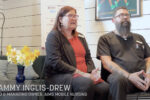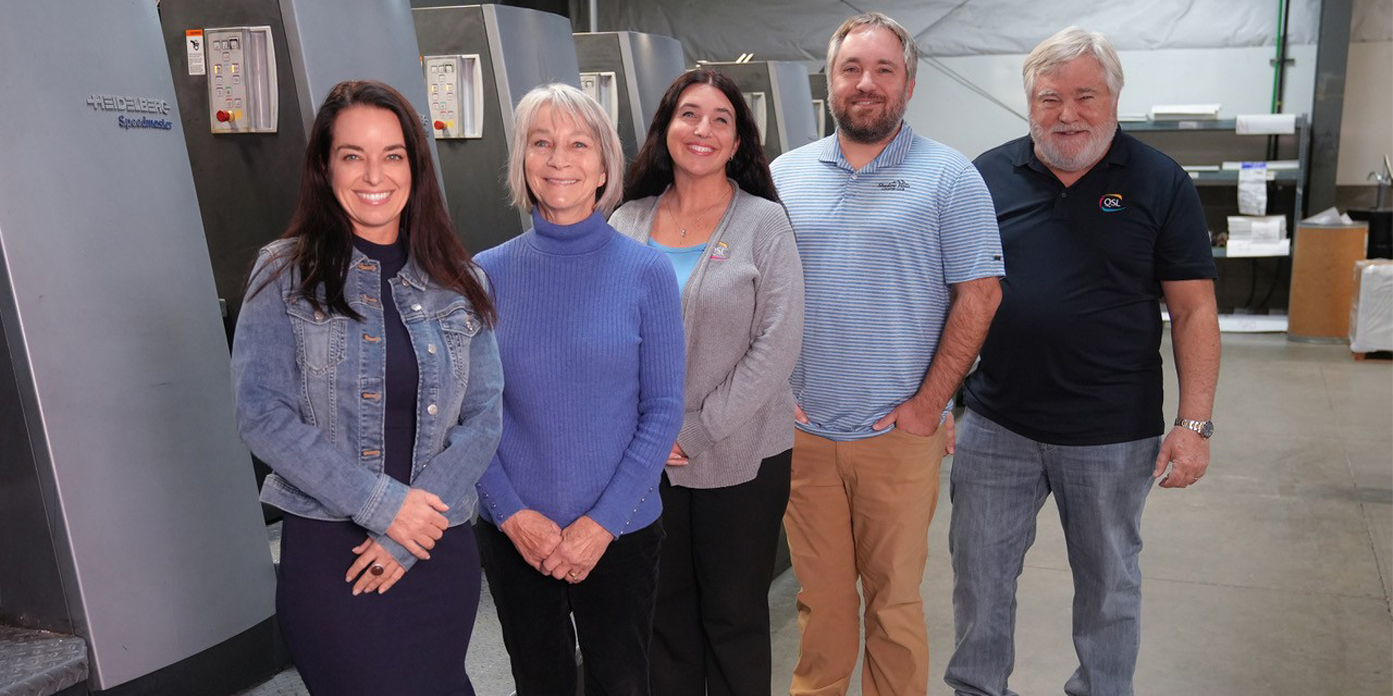2023 State of Business Program Addresses National, State, and Local Viewpoints
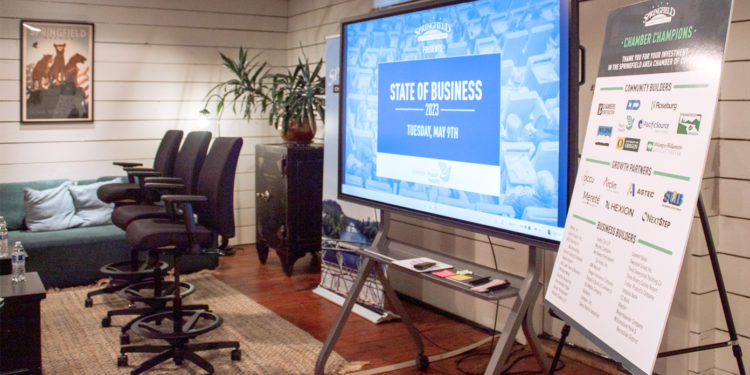
On Tuesday, May 9, the Springfield Chamber invited their members and the general public to join them in person at the Chamber Depot – and virtually, via Zoom – for the 2023 State of Business Program, presented by PeaceHealth, which offered a comprehensive look at the business landscape from a local, state, and national perspective. In this year’s program, the Chamber welcomed a distinctive panel of guest speakers with unique insights into business landscapes at all levels, who shared their expertise and valuable observations into the challenges and opportunities to businesses. Michael Dunne, radio host of KLCC’s “Oregon Rainmakers,” was the program’s facilitator.
The event was free for Chamber members and, as usual, drew a packed house, both in person and online. Concurrently, the Springfield Chamber launched a Business Climate Survey to track trends and identify emerging issues that may be addressed by the Chamber. A synopsis of the panel’s presentations is provided below. CLICK HERE to watch the video of the entire program.
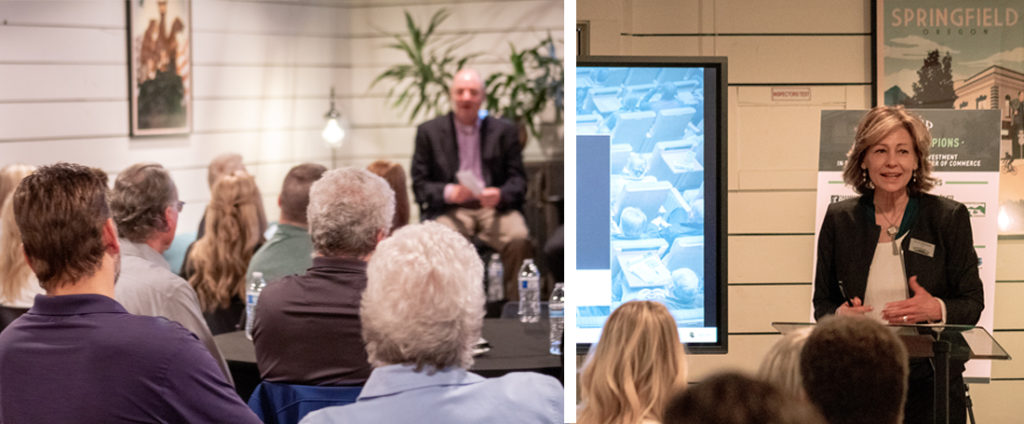
NATIONAL PERSPECTIVE
CHRIS EYLER: Vice President, Northwest Region, U.S. Chamber of Commerce
Mr. Eyler gave a quick, yet thorough overview of the national economy, at times adding how Oregon fits into that framework. Unsurprisingly, there is a huge lack of qualified workers across all sectors. Extrapolating national figures, he postulates that for every 100 job openings in Oregon, there are only 91 available workers. And with wages not growing as fast as inflation, the consumer spending that was keeping the economy going is rapidly transforming into consumer debt. The economy is slowing, and at least a minor recession is imminent.
Divided government and increased polarization slows progress on collaborative lawmaking and exacerbates the problem, creating an environment of fatigue for business owners. Skilled workforce shortages are not going away and businesses are having to re-think and innovate in order to produce the goods and services people need.
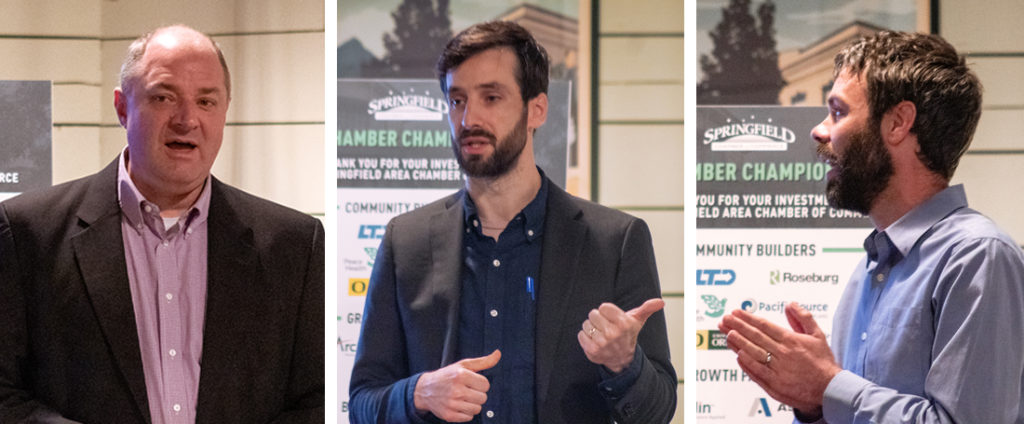
To address these issues, said Mr. Eyler, the U.S. Chamber continues to prioritize growing the workforce, largely by prioritizing availability to affordable childcare – a major reason for people not coming back to work – as well as immigration reform. Other U.S. Chamber priorities include engaging in permitting reform, fighting regulatory overreach, and increasing the debt ceiling.
STATE-LEVEL PERSPECTIVE
ANDREW DESMOND: Director, Economic Development Policy, Oregon Business Council
Mr. Desmond provided attendees with a more regional view of the economy. According to his research at the Oregon Business Council, an increase of nationalism and “deglobalization,” continued disruption of supply chains, geopolitical concerns, and a race against the clock to prevent climate change, has resulted in a “Third Energy Revolution” – that of renewable energy production. There is currently a massive public investment in clean energy technologies, and, said Mr. Desmond, this constitutes an “unprecedented opportunity” for Oregon.
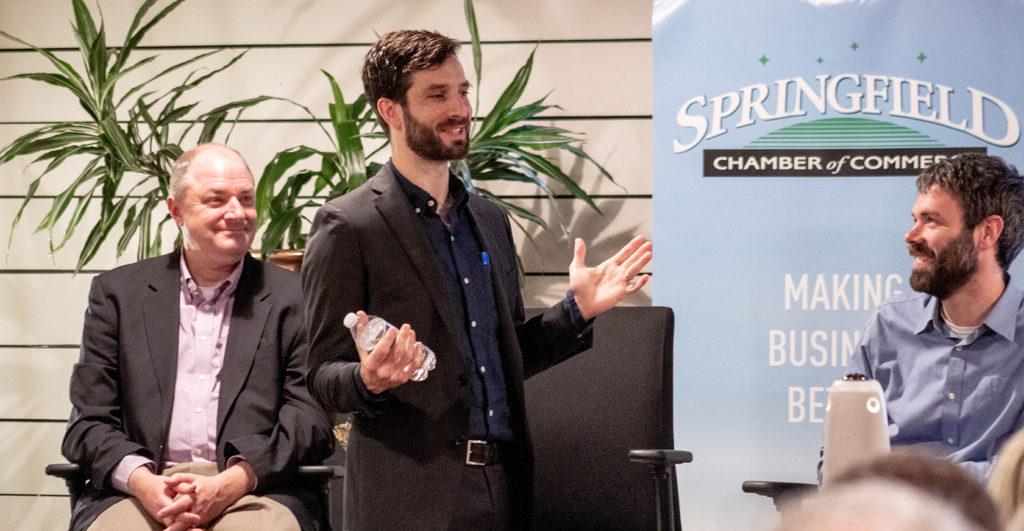
One opportunity in particular is semi-conductor production. Currently, Oregon has about 15% of the semi-conductor workforce, and with a $280 billion national investment in semi-conductor production, this could equal $40 billion for Oregon. Additionally, new investments in the renewable energy economy could amount to a $30 billion investment in our state. In order to benefit from this economic development opportunity, Oregon needs to:
- Get its “regulatory house in order” – modernize incentives, address bottlenecks and severe shortages in workforce across sectors.
- Increase access to industrial land; only a small fraction of Oregon’s industrial land is development-ready.
- Increase affordable housing: Oregon is experiencing population decline and needs to attract more workers, as well as increase their productivity.
“Few communities in Oregon have any significant amount of development-ready industrial lands. Springfield brought industrial lands into the Urban Growth Boundary in 2019. That puts Springfield ahead of many communities, a significant advantage, but Springfield has not yet prioritized investment in infrastructure necessary to make these lands development ready. This is an obvious and urgent opportunity for the community.”
– Richard Boyles, President, Sycan B Corp, Attendee of the 2023 State of Business
LOCAL-LEVEL PERSPECTIVE
HENRY FIELDS: Workforce Analyst, Oregon Employment Department
Henry Fields gave a spirited talk on the state of the economy in Lane County and Springfield. Job losses in Springfield were not as severe as the rest of Lane County, and have recovered quicker. Healthcare, manufacturing, and construction are all, on average, more prevalent in Springfield than in the rest of the county. This more diversified economy “serves us well,” said Mr. Fields, in gaining back jobs that were lost during the pandemic.
Also, unemployment is historically low in Lane County and Springfield, although wages in Lane County are significantly lower than Oregon and the rest of the country.
The program was followed by a robust Q&A session consisting of panel questions that addressed concerns at all levels. Watch the 2023 State of Business in its entirety:
Discover more from Springfield Bottom Line
Subscribe to get the latest posts sent to your email.


